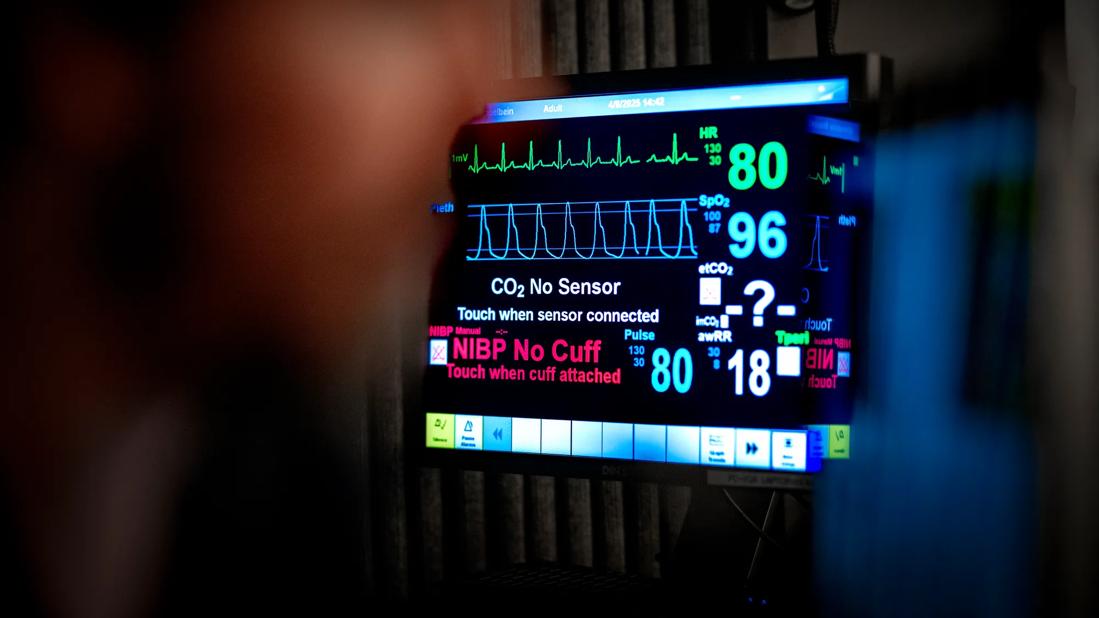Wireless electrocardiogram transmission yields many dividends

Cleveland Clinic nurses are piloting technology that eliminates the need to print heart rhythm strips onto paper, saving time and improving patient care.
Advertisement
Cleveland Clinic is a non-profit academic medical center. Advertising on our site helps support our mission. We do not endorse non-Cleveland Clinic products or services. Policy
During the past year, nurses in the heart failure and stepdown units of the Sydell and Arnold Miller Family Heart & Vascular Institute have been using electrocardiogram technology that is integrated into the Epic electronic medical record (EMR) system, alleviating the cumbersome manual process of printing and filing electrocardiogram rhythm strips.
The electrocardiogram technology wirelessly transmits patient waveforms, allowing nurses and clinicians to view live streaming and historic patient waveforms. Nurses and clinicians can also easily select and capture a waveform and post it to a patient’s EMR, where it can be viewed by all members of the patient’s care team in real time, either onsite or remotely.
“Once it is in the EMR system, it’s always there — even from a distance. Physicians can look at it from anywhere, so it really streamlines communication,” says Jason Heiss, BSN, RN, a nurse manager of a cardiac progressive care unit who is testing the technology. He says it allows nurses to interpret the telemetry strips of their patient assignment (typically four to five patients) in about 10 minutes, making it more efficient than the previous workflow.
George Rouse, BSN, RN, another nurse manager on two cardiac medical progressive care units, says being able to quickly capture the data electronically encourages nurse compliance with recording rhythm strips. Previously, the central monitor printer was often in use when nurses were ready to obtain and assess rhythm strips. Waiting for the printer meant less time for direct patient care and also, failure to return later to input the data.
Advertisement
The electrocardiogram technology also is a valuable tool to help monitor technicians in the eCentral Monitoring Unit (eCMU, which provides 24/7 cardiac telemetry monitoring for patients) identify and prioritize patients at risk. Monitor technicians can quickly pull up the live patient monitor through this technology and communicate information to nurses caring for patients. Because each monitor technician is tuned in to patients with active problems, it reduces the general noise from multiple alarms that cause desensitization and “alarm fatigue.”
“The eCMU leverages the technology so we can manage critical alarms,” says Laura Idzior, MBA, RN, NE-BC, Assistant Nursing Director, Heart & Vascular Institute and Critical Care.
“The eCMU vastly outperforms our old state technology – winning in every performance category, including efficiency, by doubling the number of monitored patients per technician,” notes Daniel Cantillon, MD, Medical Director of the Central Monitoring Unit and principal eCMU inventor. “We will never go back to the old way of monitoring where people stare at screens continually watching ECG waveforms go by. Those days are permanently over for us.”
The technology of posting strips to the EMR will be tested at additional locations throughout Cleveland Clinic health system.
Advertisement
Advertisement

Cleveland Clinic report shares details and outcomes of novel technique for open repair

Two cardiac surgeons explain Cleveland Clinic’s philosophy of maximizing arterial graft use

TVT Registry analysis could expand indication to lower surgical risk levels

Medical and surgical perspectives on current and emerging uses of ECMO and Impella

Application to flutter found safe and effective in study of 300+ patients

A scannable recap of our latest data in these clinical areas

Consensus statement aims to increase use of the perfusion technology and raise transplant volumes

Study finds comparable midterm safety outcomes, suggesting anatomy and surgeon preference should drive choice